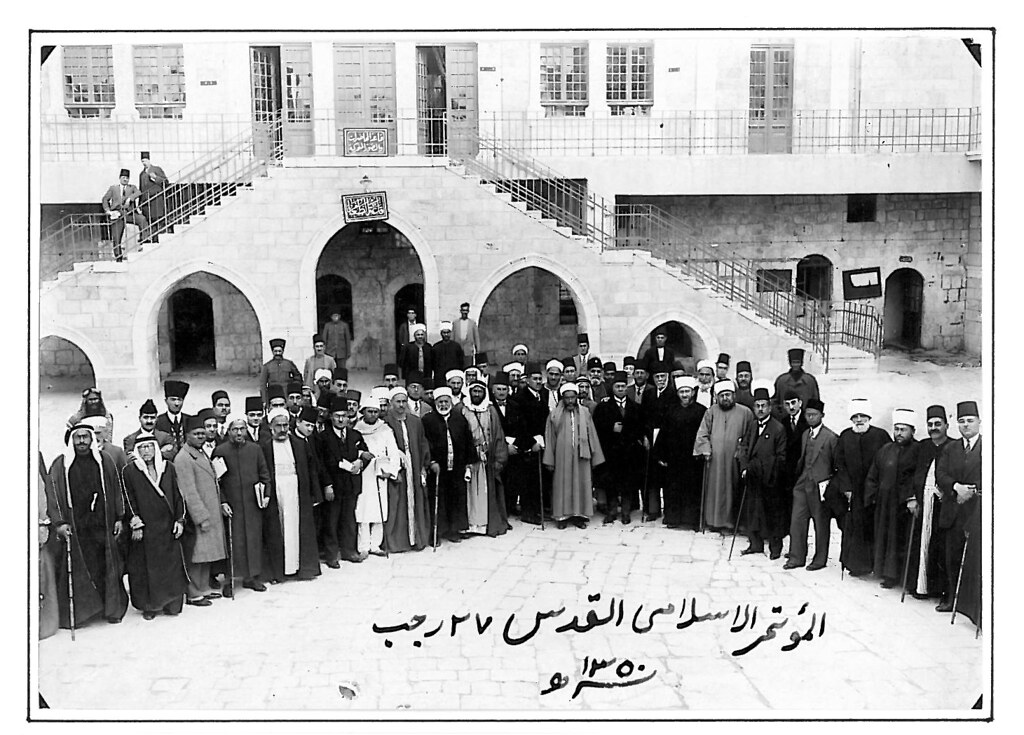World Islamic Congress
The General Islamic Congress (Arabic المؤتمر الاسلامي العام, DMG al -Mu ʾ tamar al -Islami al - ʿ Amm ) was an international conference, to December 17 in 1931 came from 7 in Jerusalem and attended by 130 Muslim delegates from 22 countries. The congress was convened by Mohammed Amin al- Husseini, Grand Mufti of Jerusalem, and ʿ Alī Shawkat, head of the Indian Khilafat Committee.
Prehistory
As early as 1928 Amīn al - Husaini had held a general Muslim Congress for the Defence of the Holy Places in Jerusalem, but was only attended by delegates from neighboring regions. The first idea for the holding of an international Islamic conference after the failure of the Islamic Conference in Cairo and Mecca in 1926 came from Muhammad ʿ Alī, the brother Shaukat ʿ Ali's, who proposed the creation of a Supreme Islamic Council in Jerusalem early 1929, the of delegates from throughout the Islamic world should be composed. When Muhammad ʿ Alī died in early 1931, al - Husaini Amīn be turned by telegram to his brother Shaukat and suggested to him to bury his brother in Jerusalem. The contacts made on this occasion led to the revival of the Congress idea.
The officially stated for the convening of the congress was due to the consultation on a proposal to establish a university at Al- Aqsa mosque in Jerusalem as a center of Islamic studies, an idea of the counter stood the leader of the prestigious Al -Azhar University in Cairo.
Nevertheless, the Congress was widely seen as an attempt of the muftis to improve its reputation in advance for applying for the post of caliph. This position was left vacant, had failed since the Islamic Conference in 1926 in Mecca because to agree on a suitable successor of King Hussein of Hejaz. The Nashashibi, a rival with the Husseini clan, however, contributed to the fact that the application of the Mufti for the caliphate was unsuccessful.
The Congress
Among the known participants of the congress included Rashid Rida (Egypt), Riad as- Solh (Lebanon), Shukri al - Quwatli (Syria ), Muhammad Iqbal (India) and Seyyed Zia al Din Tabatabai (Iran). In addition, there were also some Shia Sunni delegates. The main topics of the Congress were the question of the future of Palestine, the project of an Islamic University in Jerusalem and the Hedjaz Railway.
The delegates decided that Congress should meet at regular intervals of two or three years and that decisions should in future be adopted by an Executive Committee chaired by Husseini. The 24 members of this committee was not elected by the delegates during the conference.
In the Congress the conflict between Sunnis and Shiites has been treated. The Iraqi Twelver Shia scholar Muhammad al- Husain al - Ghita Āl Kāschif ʾ held on December 15 prior to the Congress plenary a sensational speech in which he called for unity between Sunnis and Shiites. Under this impression, Congress passed resolutions in an article that the " intensification of cooperation of Muslims, regardless of the variety of their countries and schools of law " and the " dissemination of general Islamic brotherhood " envisaged as a key objective of the re- convened conference.
Aftereffect
In the fall / winter of 1932 a branch of Congress was established under the Secretary-General Danish Husain Chan in Berlin. Even in 1936 used Amīn al - Husaini his title as president of the Congress when he declared in a fatwa that the Syrian Alawites are true Muslims. With the run Amīn al - Husaini from Palestine in 1937, the organization of their activities, even if created by the conference personnel network continued to exist.
As evidenced by an obtained Protocol entered Said Ramadan 1958 in Munich as the " Secretary General " of the Islamic World Congress against the mosque-building Commission for the Freimann Mosque on and gave a larger amount on behalf of the organization as a donation.








